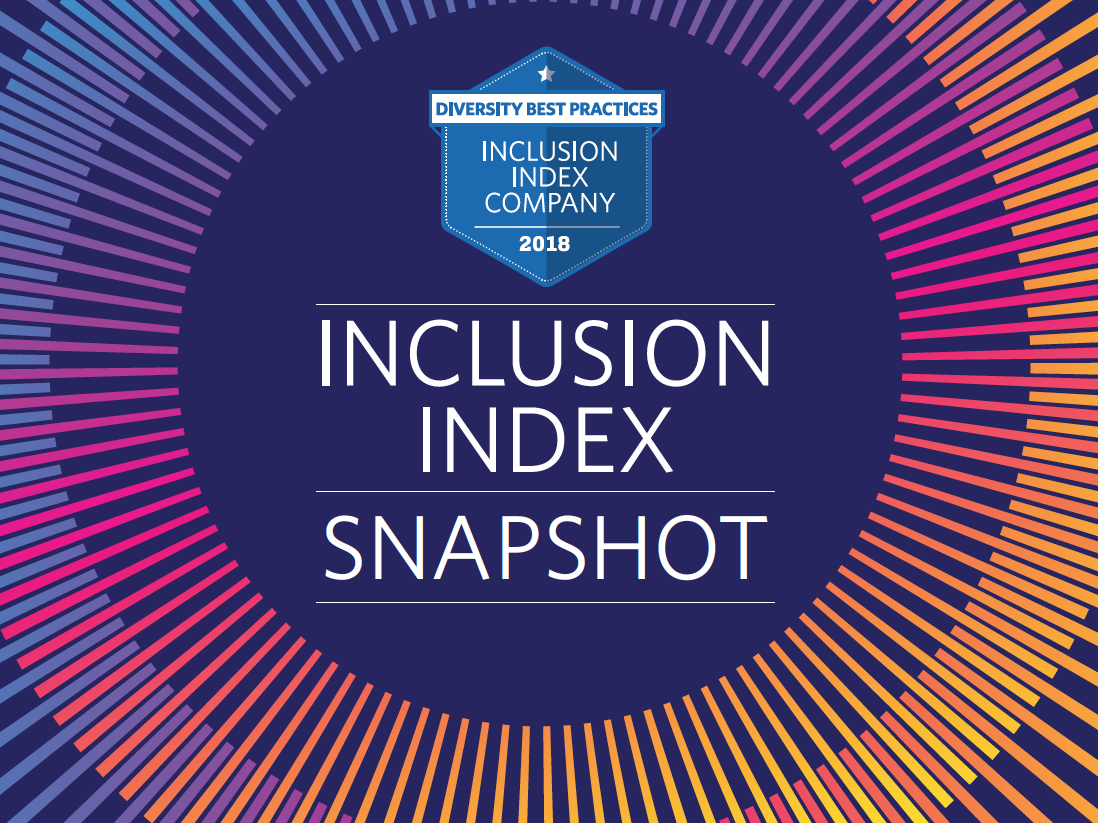Now in its fourth year, the Seramount’s Inclusion Index helps organizations understand gaps in demographic representation, diverse talent strategies and corporate culture. The results provide a strategic roadmap to drive internal change to pinpoint Diversity, Equity & Inclusion (DEI) solutions to close the gaps.
The index is a critical tool in creating change as organizations look to address systemic issues, such as lack of diverse representation at executive levels and gaps in the talent processes. DBP membership allows index participants to obtain the resources, tools, best practices, and advisory services to improve results.
This year, the number of participants increased by 24 percent with 185 sharing their data.
Participants are scored in three areas:
- Best Practices in recruitment, retention and advancement of people from under-represented groups—women, racial/ethnic minorities, people with disabilities, and lesbian, gay, bisexual, transgender and queer (LGBTQ+) people.
- Creating an Inclusive Culture through leadership accountability, clear communications and employee engagement.
- Improvement in Demographic Diversity for women and racial/ethnic minorities, especially at more senior levels and in growth and promotions.
When this index was started four years ago, its purpose was to challenge organizations to raise the bar and drive change. To encourage participation, we gave organizations credit for sharing their demographic data with us, regardless of what that data showed.
But the bar has been raised considerably in the past four years. So we now give some points for sharing data (transparency) but increasingly award more points for having diversity (by race/ethnicity and gender) in senior levels and in areas of hiring and promotion.
An index, unlike a list, does not have a set number of organizations to recognize. In an index, a threshold percentage is set, at which point any participant with that percentage or better qualifies for the index.
Seramount determined that 49 organizations scoring 60 percent and above should be recognized for their high-quality diversity and inclusion work, and named them Seramount Inclusion Index members.
A second threshold at 75 percent recognized 29 of them as Leading Organizations that had superior achievement. We also recognized 20 organizations that were our top 10 percent highest scores for their exemplary work. They had a threshold of 81 percent.
Key findings from the 2020 Diversity Best Practices Inclusion Index:
Best practices in recruitment, retention and advancement
Programs and policies that help organizations find, engage, retain and promote diverse employees are increasing and are strengthened by inclusive company cultures and more management accountability for results. Yet we note there remain best practices that still are not widely utilized, even by organizations on this index.
For example, hiring is significantly impacted by the diversity of the candidates as well as those conducting interviews. While 100 percent of the Top 10 Percent require diverse candidate interview slates (compared with 93 percent of the Leading Index and 74 percent of the Index), only 75 percent of the Top 10 Percent (vs. 62 percent of the Leading Index and 45 percent of the Index) require the panel of interviewers is diverse.
Employee-resource groups (ERGs) increasingly play a critical role in understanding the challenges and needs of employees from under-represented groups. Almost all the Top 10 Percent, Leading Index and Index organizations use these groups to recruit diverse talent.
For advancement and retention, we note the increased prevalence at these organizations of formal mentoring and sponsorship, as well as requiring diversity in executive succession planning initiatives.
For example, 80 percent of the Top 10 Percent monitor the race/ethnicity and gender of mentoring participants vs. 79 percent of the Leading Index and 49 percent of the Index.
And 85 percent of the Top 10 Percent incorporate diversity into their succession-planning processes, vs. 79 percent of the Leading Index and 59 percent of the Index.
Inclusive Culture
Accountability matters, especially from top leadership. There are increasing correlations between diverse representation at all levels when managers’ and leaders’ compensation are tied to these results. But there remain a lot of organizations that haven’t made this connection yet.
Ninety-five percent of the Top 10 Percent set diversity percentage goals for their organization vs. 90 percent for the Leading Index and 65 percent for the Index.
And 65 percent of the Top 10 Percent tie compensation to DEI goals vs. 62 percent of the Leading Index and 42 percent of the Index..
Demographics
The numbers show there’s still plenty of room at the top.
For example, Black men are only 2.4 percent of corporate executives at the Top 10 Percent vs. 1.9 percent for the Leading Index and 2 percent for the Index.
And Latinx women are only 1.5 percent of corporate executives at the Top 10 Percent and the Leading Index and 1.4 percent at the Index.
Congratulations to this year’s Seramount Inclusion Index Companies!


